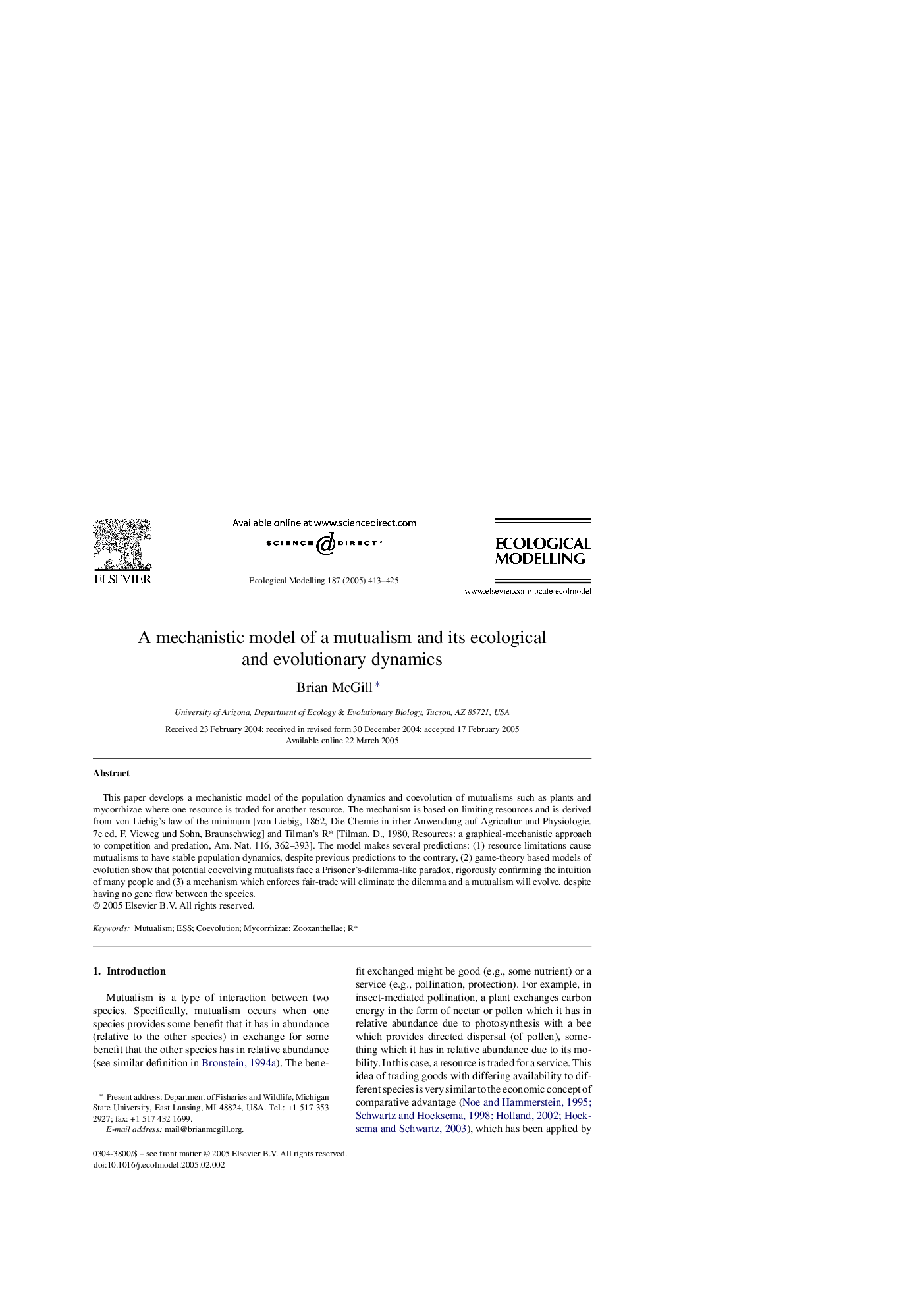| Article ID | Journal | Published Year | Pages | File Type |
|---|---|---|---|---|
| 9443318 | Ecological Modelling | 2005 | 13 Pages |
Abstract
This paper develops a mechanistic model of the population dynamics and coevolution of mutualisms such as plants and mycorrhizae where one resource is traded for another resource. The mechanism is based on limiting resources and is derived from von Liebig's law of the minimum [von Liebig, 1862, Die Chemie in irher Anwendung auf Agricultur und Physiologie. 7e ed. F. Vieweg und Sohn, Braunschwieg] and Tilman's R* [Tilman, D., 1980, Resources: a graphical-mechanistic approach to competition and predation, Am. Nat. 116, 362-393]. The model makes several predictions: (1) resource limitations cause mutualisms to have stable population dynamics, despite previous predictions to the contrary, (2) game-theory based models of evolution show that potential coevolving mutualists face a Prisoner's-dilemma-like paradox, rigorously confirming the intuition of many people and (3) a mechanism which enforces fair-trade will eliminate the dilemma and a mutualism will evolve, despite having no gene flow between the species.
Related Topics
Life Sciences
Agricultural and Biological Sciences
Ecology, Evolution, Behavior and Systematics
Authors
Brian McGill,
